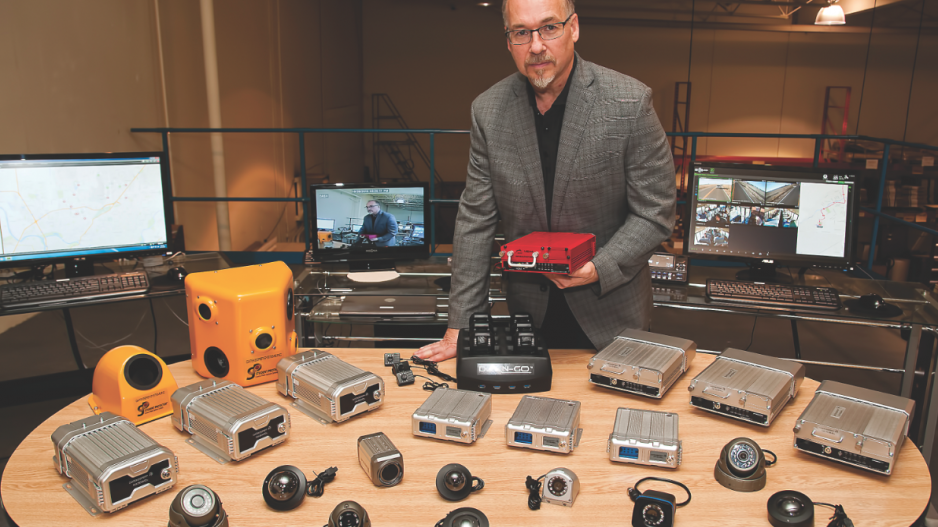Doug Dyment has his eye on the growing market for surveillance technology in the U.S. Or at the very least he has a high-definition camera pointed in that direction.
“The U.S. market typically moves a little faster on some of these security issues than Canada does,” said Dyment, the founder and CEO of Abbotsford’s Gatekeeper Systems.
He’s just returned from the International Association of Chiefs of Police conference in Chicago, where Gatekeeper unveiled two new cameras developed in B.C.: a high-def body camera for police and an in-dash camera for cruisers.
And late last month, the company completed contracts for school-bus surveillance cameras totalling $700,000.
“We have a paradigm shift about to happen,” Dyment said. “No. 1, the price of the technology is coming down to a point where it just makes sense, and, No. 2, the performance is outstanding.”
Revenue grew slightly to $4 million in 2014 from $3.8 million in 2013.
But Dyment said American lawmakers’ concerns over police abuse in cities like Baltimore and Ferguson, Mississippi, is ratcheting up interest in body camera technology in 2015.
So for now the real market for surveillance technology is in the U.S., where state and federal agencies are handing out big contracts to keep an eye on citizens.
Dyment said it’s no disrespect to Canada or its small market size, but the interest is not here.
The Vancouver Police Department (VPD) “briefly” examined the possibility of deploying body cameras among its members, according to Chief Const. Adam Palmer.
“Not opposed to it. I’m not saying it won’t happen, but I can’t give you a timeline on when it will happen,” he told reporters in November. “There are issues that we have to sort out. No. 1, obviously, is it’s very expensive.”
The Denver Police Department, which is about the same size as the VPD, is paying US$6.1 million over five years to outfit 800 of its 1,300 officers with body cameras and data storage.
Palmer said he’s waiting for Public Safety Canada and Victoria’s Police Services Division to complete their reviews of the devices before the VPD makes a decision.
“You wouldn’t want the RCMP and VPD and New West and all these different departments going out doing something different. So you almost need some kind of a standard to say, ‘If you are going to do this, how are you going to disclose it? How are you going to provide information to Crown counsel?’” he said.
“So it has taken off in the United States – still in its infancy in Canada.”
CommandWear CEO Mike Morrow said he expects acceptance of wearable surveillance technology to mature in Canada as younger people who grew up with these devices continue to join public safety institutions.
His Vancouver-based company develops technology that tracks the movements of first responders and helps them communicate with commanders and dispatchers through smartphones, tablets and smartwatches. Clients include the Singapore Police Force and San Diego Emergency Medical Services.
Morrow said there’s more political will for these types of surveillance technologies in Asia and Europe, making these devices easier to market there than here.
“We’ve had the luxury, I think, in Canada of being relatively unscathed,” he told Business in Vancouver. “We haven’t had our share, thankfully, of some of these incidents that have occurred around the world that have perhaps put a lot more focus on technology, tools, capability.”
Morrow said CommandWear has spoken to unions representing first responders concerned that the technology violates members’ privacy.
“But when we explain that this is a safety issue, there’s no problem,” he said. “Technology is not the issue here. It’s all about … does it protect these responders and does it help them do their job more efficiently?”




